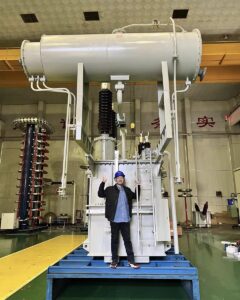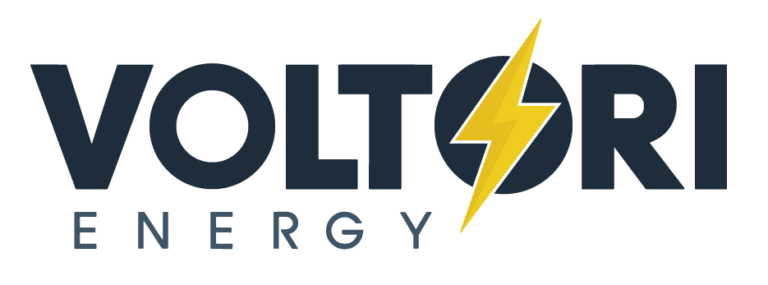Navigating transformer efficiency standards can be overwhelming for renewable energy developers. Many face delays and unexpected costs due to non-compliant equipment, jeopardizing project timelines and financial returns.
To meet Canadian energy efficiency standards, transformers must comply with NRCan regulations which typically require minimum efficiencies of 98.5% for three-phase liquid-immersed transformers. These standards reference IEC 60076-20 for testing and performance metrics while offering incentive programs for exceeding minimum requirements.
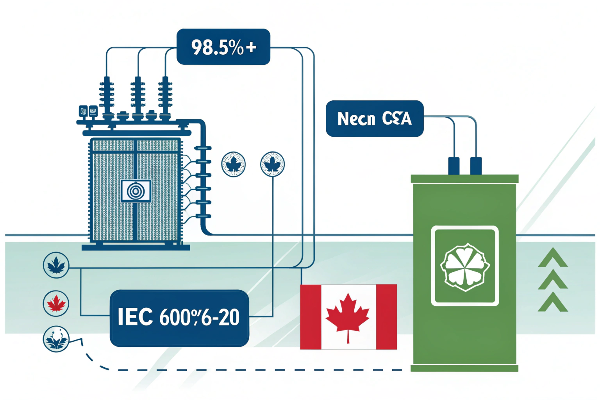
Meeting these standards isn't just about checking regulatory boxes. As renewable energy continues to grow across Canada, the efficiency of every component matters. Let's explore what these standards mean for your projects and how to ensure your transformers are fully compliant.
What Is the IEC Standard for Transformer Efficiency?
Power system designers often struggle with international standards alignment. Without proper IEC compliance, you risk equipment rejection and costly project delays when implementing renewable energy solutions.
The IEC 60076-20 standard is the international benchmark for power transformer energy performance. It establishes testing methods, load/no-load loss measurement protocols, and efficiency classification systems that Canadian regulations reference, providing a global framework for transformer efficiency assessment.
 standard illustration IEC transformer standard](https://voltoritransformer.com/wp-content/uploads/2025/08/image-2-iec-60076-20-standard-illustration-cre.png)
The IEC 60076-20 standard has become increasingly important in our work at Voltori Energy. This comprehensive framework does far more than just set basic efficiency thresholds. It establishes sophisticated testing methodologies that account for real-world operating conditions and varying load profiles.
What makes this standard particularly valuable is its approach to loss measurement. It categorizes losses into no-load losses (core losses present whenever the transformer is energized) and load losses (occurring during power transmission). For renewable energy applications, this distinction is crucial because generation patterns are intermittent. A transformer might operate at 20% capacity during cloudy periods and suddenly jump to 90% when the sun emerges.
The standard also introduces Peak Efficiency Index (PEI) values that help compare transformers across different power ratings. In a recent solar farm project in Alberta, we designed our transformers to achieve PEI values exceeding 99.6%, significantly above the minimum required thresholds. This attention to efficiency directly translated to approximately $32,000 in annual energy savings for our client.
Beyond technical specifications, adoption of the IEC standard facilitates international market access. For Canadian renewable projects utilizing equipment from global suppliers, this harmonization simplifies integration and certification processes.
What Is the Energy Efficiency of a Transformer?
Transformer inefficiency directly impacts your bottom line. For every percentage point lost, thousands of dollars in potential energy production disappears annually, silently eroding project profits throughout your installation's lifetime.
Transformer energy efficiency represents the ratio between output and input power, typically ranging from 97-99% for modern distribution transformers in renewable installations. This efficiency is determined by minimizing core losses (present whenever energized) and winding losses (which increase with load).

At Voltori Energy, achieving optimal transformer efficiency is both a science and an art. While the basic definition seems straightforward—output power divided by input power—the practical application involves complex engineering decisions and trade-offs.
Modern transformer design focuses on minimizing two primary loss categories. First are core losses (also called iron losses or no-load losses), which occur in the transformer's magnetic core and remain constant regardless of load. These persist 24/7, making them particularly important for renewable applications where generation fluctuates. We've found that using higher-grade silicon steel core materials with thinner laminations can reduce these losses by up to 15% compared to standard options.
The second category, winding losses (or copper losses), varies with the square of the current. These become more significant during peak generation periods. In a recent wind farm installation in Manitoba, we utilized specialized conductor configurations and optimal winding geometries to reduce these losses by approximately 12%.
Temperature also plays a critical role in efficiency. Each 5°C increase above rated temperature typically increases losses by about 0.5%. For northern Canadian installations, we implement enhanced cooling systems to maintain optimal operating temperatures even during summer peaks. Meanwhile, our transformers for coastal installations feature special insulation systems that resist moisture-related efficiency degradation.
The measurement of these efficiencies follows rigorous protocols established by standards like CSA C802.1, requiring specialized testing under various load conditions. For larger renewable installations, even a 0.2% efficiency improvement can translate to tens of thousands in additional revenue over the equipment's lifespan.
What Is the Energy Efficient Transformer Rebate?
Managing capital costs for renewable projects is challenging, with transformers representing a significant investment. Many developers miss valuable rebate opportunities that could offset these costs while delivering higher long-term returns.
Energy efficient transformer rebates in Canada vary by province, offering financial incentives when installing units that exceed minimum efficiency standards. Programs like BC Hydro's incentives provide up to 25% of project costs, while Ontario's IESO offers similar support, requiring comprehensive documentation of performance specifications.
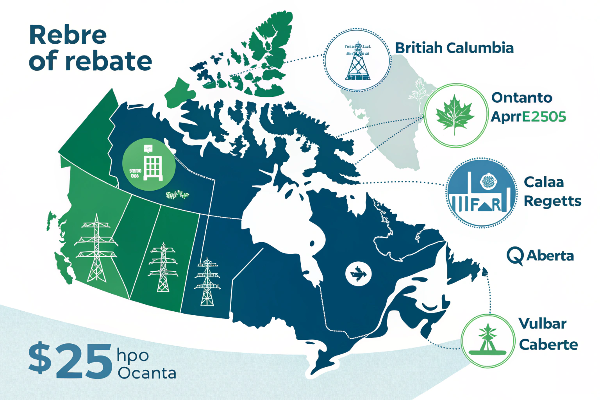
The landscape of transformer rebate programs across Canada presents a valuable opportunity that's often underutilized in renewable energy projects. In my experience working with clients nationwide, I've found these financial incentives can substantially improve project economics when properly leveraged.
BC Hydro's Custom Energy Efficiency Program has been particularly beneficial for our solar farm clients. This program evaluates transformer efficiency based on projected annual energy savings and typically awards incentives ranging from $0.03 to $0.05 per kWh saved annually. For a medium-sized solar installation, this often translates to rebates between $40,000-$75,000. However, qualification requires detailed energy modeling and baseline comparisons that many developers find challenging to navigate.
In Alberta, the Energy Efficiency Alberta program takes a different approach, offering prescriptive rebates based on capacity and efficiency ratings. Their structure rewards transformers that exceed minimum standards by specific thresholds—each 0.1% efficiency improvement above baseline can increase the rebate amount by approximately 5-7%.
Quebec's Hydro-Québec program has specific provisions for renewable energy infrastructure, offering enhanced incentives when transformers support clean energy generation. Their application process requires extensive technical documentation including load profiles, harmonics analysis, and detailed specifications. We routinely assist clients with these submissions as the requirements can be technically demanding.
The timing of these applications is also critical. Most programs require approval before equipment purchase, making early planning essential. Additionally, many utilities require post-installation verification testing to confirm the transformers perform as specified. In one recent case with an Ontario client, these verification requirements necessitated specialized testing procedures to demonstrate compliance with the promised efficiency levels.
What Is the Minimum Efficiency of a Transformer?
Selecting transformers with bare minimum efficiency standards might appear cost-effective initially but often leads to substantial operational losses. These inefficiencies compound over decades, potentially undermining the financial viability of renewable energy investments.
The minimum efficiency for transformers in Canada is regulated by Natural Resources Canada (NRCan) standards, typically requiring three-phase liquid-immersed units to achieve at least 98.5% efficiency, with requirements varying by capacity and type. These standards align with CSA C802 specifications and are regularly updated to increase stringency.
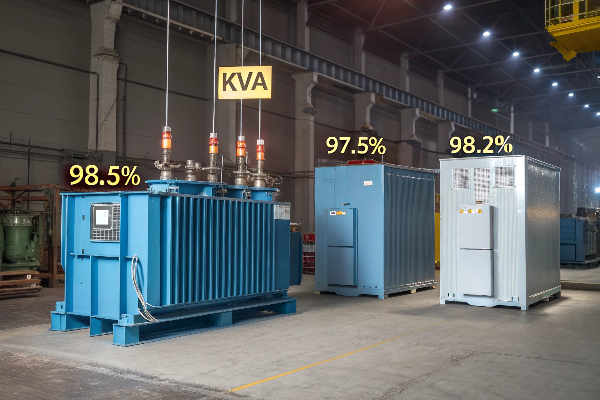
The regulatory landscape for transformer efficiency in Canada has evolved significantly in recent years. When I first entered the industry, the requirements were notably less stringent than today's standards. NRCan has progressively tightened these thresholds, particularly for renewable energy applications, recognizing that distribution transformers operate continuously for decades.
The current minimum efficiency requirements follow a sliding scale based on kVA rating. For example, a typical 1000 kVA three-phase liquid-immersed transformer must achieve at least 99.22% efficiency at 50% load. For dry-type transformers commonly used in indoor solar inverter stations, the requirements are slightly lower—around 98.82% for the same capacity—acknowledging the inherent differences in cooling technology.
These regulations derive from the CSA C802 series of standards, which Canada harmonizes with U.S. Department of Energy requirements. However, there are Canadian-specific adaptations that account for our colder climate and unique grid characteristics. The standards address both linear and non-linear loads, with particular attention to harmonic distortion common in renewable energy applications.
In practical terms, meeting these minimum standards involves sophisticated material selection and design considerations. Silicon steel grade, core construction geometry, conductor material and configuration, cooling system design, and insulation systems all play critical roles. We frequently utilize advanced computer modeling to optimize these parameters before physical construction begins.
Perhaps most importantly, these minimum standards serve as just that—minimums. At Voltori, our typical designs exceed these standards by 1.2 to 1.5 percentage points. While this might seem incremental, over a 25-year service life, this efficiency improvement can prevent approximately 380 tons of CO2 emissions per transformer while saving clients hundreds of thousands in energy costs.
Conclusion
Meeting Canadian transformer efficiency standards requires understanding both technical requirements and available incentives across different provinces. Proper planning ensures compliance while maximizing financial returns on your renewable energy investments. Trust Voltori Energy to deliver custom transformers that exceed efficiency standards for your sustainable energy future.


